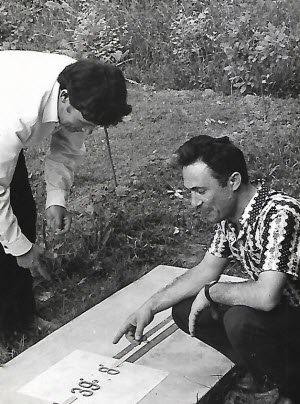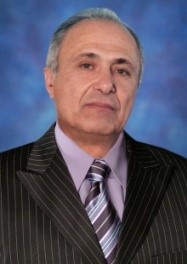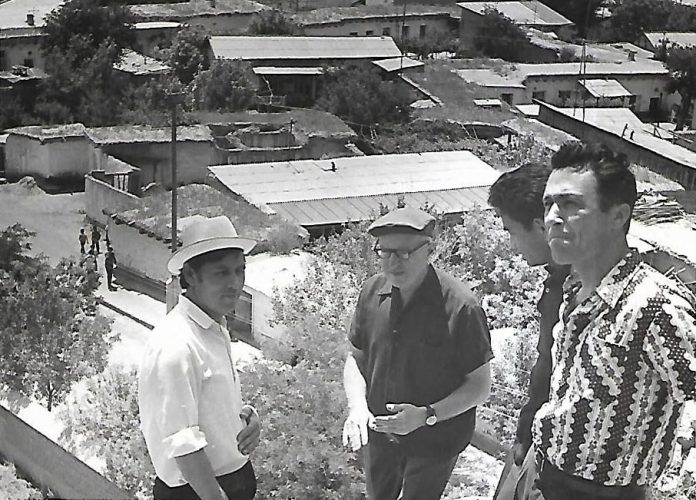See Russian Below
Kashkadarya region is a rich land with beautiful nature. On its territory there are hundreds of different historical monuments. The center of the region is the city of Karshi, one of the oldest cities in the world, whose age is 2700 years. The region includes such famous cities as Shahrisabz and Kitab. The first is listed as a UNESCO world heritage site.
The history of Samarkand Jews is closely connected with the city of Shahrisabz. It is known that Moshe Kalontar, a native of the city of Shahrisabz, in 1837, was involved in the management of the Jewish community of the city of Samarkand, and stayed on a post of the headman until his death, in 1878. Moshe’s father, Il’you Abulhayr, was executed in 1825, in a most cruel manner for refusing to accept Islam. On his head was made a turban of dough and poured boiling oil. His wife, with three childrens, fled to Samarkand in the same year.
Most recently, in September 2018, as part of the triumphal tour with concerts in the cities of Uzbekistan, residents and guests of Shahrisabz welcomed their idol, a native of this city, currently a USA citizen, people’s artist of Uzbekistan, Ezro Malakov famous of shashmakom.
The list of cultural values of Kashkadarya region could be continued. But in the framework of this material the author would like to focus on two attractions that are not usually included in the objects of regular tourist routes, but they are certain, as a General historical interest, and in terms of Jewish history.
These include the Kitab international latitude station(KIlS), which is located in the city of Kitab, at the distance of about 13 km from Shahrisabz and the second object, the village “chil-chuvuton”(translated from Tajik forty-Jews).
Researchers found that the earth’s poles are in motion. This phenomenon affects the geographical coordinates of the location of the earth’s surface and involves a number of problems of astronomy, geodesy, Geophysics, etc. To keep a track of these changes established the International latitude stations(MCW). There are five similar stations in the world and they are located geographically in different countries. In the center there is a station in Kitab. To the West of it latitudinal station in the Geisberg(USA) and Carloforte(Italy), and to the East in Mizuzawa(Japan) and Ukay(USA).
In 1974, a group of scientists from Moscow and Samarkand visited Shahrisabz and Kitab. After getting acquainted with the ancient historical monuments have shown us (KMSW), which operates since 1930. This station is located at latitude 39 degrees and 08 angular minutes North latitude. On October 16, 1970, a marble slab with the data of the international latitude parallel +39°08’was installed at the station. The platform contains the above five stations. Below are the photos taken at this station. The first photo shows a part of the plate and members of the delegation, the author of the article on the right. In the second picture-members of the delegation against the urban village-kitaba.


The second visit to Kashkadarya region by the author was connected with the report in the city of Karshi, in October 1988, at a visiting scientific-practical conference organized by the all-Union journal “Technology in agriculture”. At the end of the conference, one of the colleagues, a native of these places invited us to visit his father’s house, which was in the province of Kashkadarya region. He stressed that the door to their village there is another village called “chil-chuvuton”(forty-Jews). The author was intrigued by this report, as he had never heard of it before. And although it was already quite late, and it was necessary to cover a distance of about 30-40 km, we agreed to the trip. From conversations with villagers “chil-chuvuton” it turned out that not a single Jew currently in this village, and the stories of their parents and grandparents, and with them the Jews there too had not lived. And in General they don’t remember that fellow villagers, sometime spoke about presence of Jews in the village. Thus, probably, it is possible to draw a conclusion that if Jews really lived in this village, it was very long ago. And, accordingly, the question arises, how in the light of historical realities could such a name be preserved? About existence of this village, most likely, very few people had information, not only from representatives of our ethnos, but probably and among researchers of history of Jews.
Why do I remember this material? This is due to the fact that recently in the fields of” Wikipedia” appeared material Professor Duke University Dan Ariel called “Version of the proselytic origin of Bukhara Jewry.” According to his version ((extract) “…the last Jewish communities in Central Asia ceased to exist during the invasion of the barbarian hordes from the Mongolian steppes. These Jews spoke Iranian and Arabic. They immigrated to the Polish Kingdom where Kazimir the Great ruled. Deeply in love with the Jew Estherka, he invited Jews from all over the world to live in his country…”And forth he writes .”..Yosef Maman converted to Sephardic Judaism representatives of the Shiite sect, whose members call them selves”Isroil”. As can be seen from the descriptions, Bukhara Jews are the descendants of the ruling class of the Emirate of Bukhara, who by mistake took Spanish Judaism, considering it a divine truth.”
I found it necessary to answer Mr. Dan Ariel to his unfounded conclusions. (Here are excerpts, and the full text of the note by Dan Ariel and the author’s answer can be found on the Internet site bukhariancommunity. com) ” According to Dan Ariel, the hordes of Genghis Khan and Tamerlan’s troops completely massacred the Jews of Central Asia. It should be noted that the fear of the hordes of Genghis Khan, often forced the local rulers without a fight to surrender the city, which Genghis Khan robbed, devastated, and the people partially cut, partially stolen into slavery. But a small group of the population still managed to hide in the Outback and form new settlements, including Jews. For example, in Kashkadarya region of Uzbekistan, in the remote rural areas there are village “chil chuvuton” (translated from Tajik forty-Jews), although no Jews now reside there and not in the recent past, also lived. No one can explain when and why this name was given to the village?”By the way on American maps this village is shown as Yukari-Chiljugut(upper – “forty of the Jews” and Urta-Chiljugut(medium – “forty of the Jews”).
(Also as part of the response to the imagination of Dana Ariel, in the newspaper “Menorah” (No. 781, March 16, 2017) was published a joint article of the author and Markiel Fazylov “Absurd in the Internet space”.
The interesting question is, why in the name of the village “chil-chuvuton”(forty Jews) was selected the number forty? It is clear that it does not reflect the real number of Jews who lived there permanently. But we know that the figure 40 describes some of the main events in Jewish history: the 40 days Moses spent on mount Sinai; the 40 days of pouring rain of the flood; 40 years of wandering Jews in the desert, and you can continue with similar examples. And if we assume that the name of the village was given by the emirs and the Muslim clergy to highlight the area for the Jews, which has repeatedly occurred in the history of Central Asia, the Koran also mentions the number of forty days spent by the Prophet Musa (i.e. Moshe) on mount Tur (Sinai), forty years of wandering Jews in the desert, etc.
AMNUN KIMYAGAROV, candidate of technical Sciences, associate Professor, President of the American branch of the International Academy for the development of technology, Inventor of the USSR, member of the Union of writers of Israel, member of the “International Association of creative intelligentsia

Малоизвестные достопримечательности Кашкадарьинской области
Кашкадарьинская область- это богатый край обладающий красивой природой. На его территории расположены сотни различных исторических памятников. Центром области является город Карши, один из древнейших городов мира, возраст которого 2700 лет. В состав области входят такие известные города, как Шахрисабз и Китаб
Первый занесен в Список Всемирного культурного наследия ЮНЕСКО.
С городом Шахрисабз тесно связана история евреев Самарканда. Известно,что Моше Калонтар, уроженец города Шахрисабза, в 1837 году был привлечен к управлению еврейской общиной города Самарканда, и пробыл на посту старосты до самой смерти, в 1878 году. Отец Моше, Ильёу Абдулхайр, был казнен в 1825 году самым жестоким образом, за отказ принять ислам. На голове ему слепили чалму из теста и залили кипящее масло. Его жена, с тремя детьми, в том же году, бежали в Самарканд.
Совсем недавно, в сентябре 2018 года, в рамках триумфиального турне с концертами по городам Узбекистана, жители и гости Шахрисабза приветствовали своего кумира, уроженца этого города, в настоящее время гражданина США, народного артиста Узбекистана, известного шашмакомиста Эзро Малакова.
Перечень культурных ценностей Кашкадарьинской области можно было бы продолжить. Но в рамках данного материала автору хотелось бы остановиться на
двух достопримечательностях, которые не входят обычно в объекты регулярных туристических маршрутов, но они представляют определенный, как общий исторический интерес , так и с точки зрения еврейской истории. К ним относятся Китабская международная широтная станция(КМШТ), которая находится в г. Китабе, на растоянии примерно 13 км. от Шахрисабза и, второй объект, село «чиль-чувутон»(перевод с таджикского -сорок евреев).
Исследователями установлено, что земные полюса находятся в движении. Это явление влияет на географические координаты мест земной поверхности и затрагивает целый ряд задач астрономии, геодезии, геофизики и др. Чтобы постоянно отслеживать эти изменения созданы Международные широтные станции(МШС). Всего в мире пять подобных станций и расположены они географически в различных странах. В центре находится станция в Китабе. К западу от неё широтные станции в Гейсберге(США) и Карлфорте(Италия), а к востоку в Мицузаве(Япония) и Юкайе(США).
В 1974 году группа ученых из Москвы и Самарканда побывали в Шахрисабзе и Китабе. После ознакомления с древними историческими памятниками нам показали (КМШТ), которая функционирует с 1930 года. Эта станция расположена на широте 39 градусов и 08 угловых минут северной широты. 16 октября 1970 года на станции была установлена мраморная плита с данными международной широтной параллели +39°08′. На платформе указаны вышеуказанные пять станций. Ниже приведены фотографии снятые на этой станции. На первой фотографии показана часть плиты и члены делегации, справа автор статьи. На втором снимке – члены делегации на фоне поселка городского типа – Китаба.


Второе посещение Кашкадарьинской области автором было связано с докладом в городе Карши, в октябре 1988 года, на выездной научно-практической конференции, организованной Всесоюзным журналом «Техника в сельском хозяйстве». По окончанию работы конференции один из коллег, уроженец этих мест пригласил нас в гости в отчий дом, который находился в глубинке Кашкадарьинской области. При этом он подчеркнул, что по соседству с их селом есть другое село с названием «чиль-чувутон»(сорок евреев). Это сообщение заинтриговало автора, так как об этом раньше никогда не слыхал. И хотя было уже довольно поздо, а надо было покрыть расстояние примерно 30-40 км, мы согласились на поездку. Из беседы с жителями села «чиль-чувутон» выяснилось, что ни одного еврея в настоящее время в этом селе нет, и по рассказам их родителей и дедушек, при них евреи там тоже не жили. И вообще они не помнят, чтобы односельчане, когда-нибудь говорили о присутствии евреев в селе. Таким образом, наверное, можно сделать вывод, что если евреи действительно жили в этом селе, то это было очень давно. И соответственно возникает вопрос, как в свете исторических реалий могло сохраниться такое название? О существовании этого села, по всей видимости, мало кто имел информацию, не только из представителей нашего этноса, но вероятно и среди исследователей истории евреев.
Почему мне вспомнился этот материал? Связано это с тем, что недавно на полях «Википедии» появился материал профессора Дюкского Университета Дана Ариэля под называнием «Версия о прозелитском происхождении бухарского еврейства». По его версии(выдержки) «…последние иудейские общины в Средней Азии прекратили своё существование во времена нашествия варварских орд из монгольских степей. Эти иудеи говорили на иранском и арабском языках. Они иммигрировали в Польское королевство где правил Казимир Великий. Глубоко влюбившись в иудейку Эстерку, он пригласил иудеев со всего мира на проживание в свою страну…» И далее он пишет «…Йосеф Маман обратил в сефардский иудаизм представителей шиитской секты, члены которой называют себя “исроил”. Как видно из описаний, бухарские евреи являются потомками правящего класса Бухарского эмирата, которые по недоразуменнию приняли испанский иудаизм, посчитав его за божественную истину».
Я счёл необходимым ответить господину Дану Ариэлю на его ни чем необоснованные выводы. (Здесь приводятся выдержки, а полный текст заметки Дана Ариэля и ответ автора можно прочитать на интернете на сайте bukhariancommunity. сom) «По мнению Дана Ариэля, орды Чингизхана и войска Тамерлана полностью вырезали иудеев Средней Азии. Следует отметить, что страх перед ордами Чингизхана, часто заставлял местных правителей без боя сдавать города, которые Чингизхан грабил, опустошал, а народ частично вырезал, частично угонял в рабство. Но небольшой группе населения все же удавалось скрыться в глубинке и образовывать новые поселения, в том числе и евреям. К примеру, в Кашкадарьинской области Узбекистана, в сельской глубинке существует село «чиль чувутон» (в переводе с таджикского языка-сорок евреев), хотя ни одного еврея сейчас там не проживает и в обозримом прошлом, также не проживало. Никто не может объяснить, когда и почему дано селу такое название?» Кстати на американских картах этот поселок показан как Юкары-Чильджугут(верхний – «сорок евреев» и Урта-Чильджугут(средний – «сорок евреев»).
(Также в рамках ответа на фантазию Дана Ариэля, на страницах газеты «Менора» (№781, 16 марта 2017 г.) была опубликована совместная статья автора и Маркиэла Фазылова «Абсурд в пространстве интернета».
Интересен вопрос, почему в названии села «чиль-чувутон»(сорок евреев) была выбрана цифра сорок? Ясно, что она не отражает реального количества постоянно проживавших там евреев. Но известно, что цифра 40 характеризует несколько главных событий в истории евреев: 40 дней провел Моше на Синае; 40 дней лил ливень потопа; 40 лет блуждали евреи в пустыне и можно продолжить подобные примеры. А если предположить, что название селу дали эмиры и мусульманское духовенство, чтобы выделить местность для проживания евреев, что неоднократно происходило в истории Центральной Азии, то в Коране также упоминается число сорок: сорок дней проведенных Пророком Мусой(то есть Моше) на горе Тур(Синай), сорок лет скитаний иудеев в пустыне и т. д.
АМНУН КИМЬЯГАРОВ, кандидат технических наук, Доцент, президент американского отделения Международной Академии по развитию технологий, Изобретатель СССР, член Союза писателей Израиля, член «Международной ассоциации творческой интеллигенции















